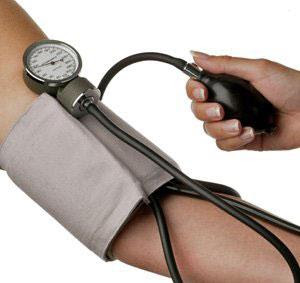Nursing Diagnosis for Hypertension:
Acute Pain (headache) related to increased cerebral vascular pressure
Purpose:
Expected outcomes:
Nursing Intervention for Hypertension - Acute Pain :
1. Maintain bed rest during the acute phase.
2. Give non-pharmacological measures to relieve headaches eg, a cold compress on the forehead, neck and back massage, quiet, Dim the room lights room lights, relaxation techniques (your imagination, diktraksi) and leisure time activities.
3. Eliminate / minimize vasoconstriction activity can increase headache eg, straining during defecation, coughing and bending length.
4. Assist patients in ambulation as needed.
5. Berikancairan, soft foods, regular oral care in the event of bleeding nose or nasal pack has been done to stop the bleeding.
6. Collaboration of analgesic drugs.
Rational:
1. Minimizing stimulation / enhance relaxation.
2. Measures that reduce cerebral vascular pressure and that slow / block sympathetic responses are effective in eliminating the headaches and complications.
3. Activities that enhance vasoconstriction causing headaches in the increased cerebral vascular pressure.
4. Dizziness and blurred vision often associated with pain also experience episodes kepala.pasien postural hypotension.
5. Improve comfort umum.kompres nose can disrupt the ingestion or require breath with your mouth, causing stagnation oral secretions and mucous membranes dry out.
6. Lose / control pain and reduce sympathetic nervous system stimulation.
Acute Pain (headache) related to increased cerebral vascular pressure
Purpose:
- Having given nursing care, pain expectancy is reduced / controlled.
Expected outcomes:
- Clients reported pain / discomfort disappeared / controlled.
Nursing Intervention for Hypertension - Acute Pain :
1. Maintain bed rest during the acute phase.
2. Give non-pharmacological measures to relieve headaches eg, a cold compress on the forehead, neck and back massage, quiet, Dim the room lights room lights, relaxation techniques (your imagination, diktraksi) and leisure time activities.
3. Eliminate / minimize vasoconstriction activity can increase headache eg, straining during defecation, coughing and bending length.
4. Assist patients in ambulation as needed.
5. Berikancairan, soft foods, regular oral care in the event of bleeding nose or nasal pack has been done to stop the bleeding.
6. Collaboration of analgesic drugs.
Rational:
1. Minimizing stimulation / enhance relaxation.
2. Measures that reduce cerebral vascular pressure and that slow / block sympathetic responses are effective in eliminating the headaches and complications.
3. Activities that enhance vasoconstriction causing headaches in the increased cerebral vascular pressure.
4. Dizziness and blurred vision often associated with pain also experience episodes kepala.pasien postural hypotension.
5. Improve comfort umum.kompres nose can disrupt the ingestion or require breath with your mouth, causing stagnation oral secretions and mucous membranes dry out.
6. Lose / control pain and reduce sympathetic nervous system stimulation.


